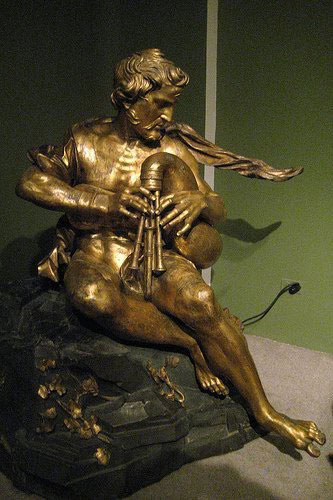SORDELLINA
RENAISSANCE COURTLY BAGPIPE
The sordellina, belonging to the genus of the bagpipes, is equipped with a bellows to feed the air pocket and, unlike the popular bagpipes, some keys on the two melody pipes, to perform the main alterations. It seems to have been invented in Naples at the end of the 15th century; the application of the keys, probably started from the middle of the 16th century, continues until the mid-17th century.
Another substantial difference is the social field of the use of the sordellina: a court instrument, with a repertoire in part popular and partly cultured, suitable for a chamber environment, because the sound of the instrument was contained (the name sordellina comes from deaf) and therefore allows you to sing on it even to the same player, freed from the commitment to blow inside.

Sordellina played by Poliphemus
from Todini’s musical machine, mid 17th century; Metropolitan Museum, New York

SORDELLINA rebuilt by Franco Calanca
The most recent research has revealed a vast repertoire for sordellina, documented in the extraordinary manuscript of Giovanni Lorenzo Baldano (from 1600) which contains about 160 songs, including songs and dances for sordellina, including all the main dances of the 16th century understood as themes with variations , written in the form of a tablature.